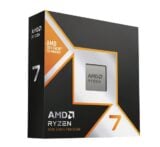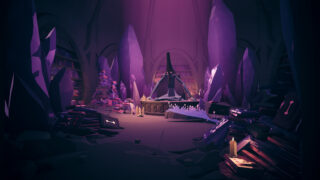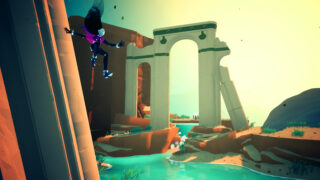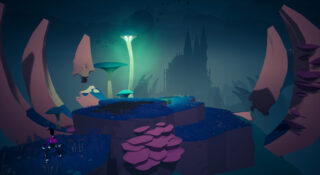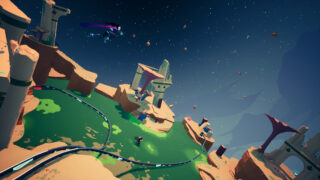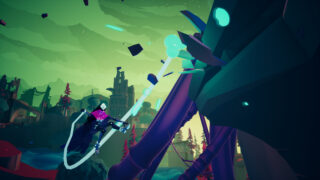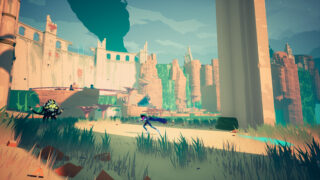Solar Ash review: Shadow of the Colossus meets Jet Set Radio in a sci-fi stunner
The studio behind Hyper Light Drifter delivers a highly original open-plan platform game
- Creative director
- Alx Preston
- Key Credits
- Chelsea Hash (Game director), Cosimo Galluzi (Lead artist)

There’s no simple way to describe Solar Ash. In terms of potential gaming influences, a few spring to mind, but it’s quite a disparate bunch. There’s definitely a slice of Shadow of the Colossus, for example, but also Jet Set Radio and perhaps a pinch of Mario Galaxy. If you can put those together, you should have a rough idea.
More than anything, however, in its soul, Solar Ash feels like developer Heart Machine’s first title, Hyper Light Drifter. On the surface, it looks a very different beast from that sombre, almost Soulslike pixel art odyssey. But it shares the same core attraction – a quietly alien landscape dripping with mystery, begging to be explored.
You play as Rei, a ‘voidrunner’ tasked with entering a black hole called the ‘Ultravoid’ and destroying it from inside before it absorbs her home planet. Within you find chunks of worlds lost to the void in the past, even a few survivors, linked by clusters of solid blue clouds. Tower blocks, twisted monorails and waterfalls stand layered and fragmented among the spongey formations.
Solar Ash’s six areas are beautiful spiralling constructions, painted in blocks of sharp green, blue and pink. Each is testament to an expired civilisation, like a museum of planets represented by hastily gathered artefacts. To Rei, they’re sites of fearsome wonder, but also playgrounds. Chiselled cliffs provide viewpoints from which to examine their every contortion. Spot a point of interest in the distance, or a string of pink collectibles that must lead somewhere, then dive off towards them.
Rei is built for this place. Her primary means of travel is to ‘skate’, rollerblading with magical smoothness across cloud or earth, boosting to make double long jumps to far flung platforms, or grinding rails that jut into the sky. Add to that a swishing melee attack plus a grapple ability that pulls you into marked hooks and enemies. And, should you need to zoom in on a grapple point or steady your aim, you can also briefly slow time.
It’s a relatively slim skill set, but perfect for traversing a place that’s at once shattered and cleanly preserved. So many neat, flat surfaces, so many tracks to grind, so many drifting chunks to leap and grapple between. Crucially, combining these acrobatic feats without breaking stride comes naturally, bringing an addictive quality to simply spotting and following lines through the open areas. It’s all so frictionless that no destination ever feels too distant or like too much effort.
Sprinting and launching yourself around these spaces also trains you for the game’s main tasks. To activate the void destroying ‘Starseed’ device, Rei has to reboot Cyd, an AI system. And she can only do that once she’s cleared a number of ‘anomalies’ in each sector that block Cyd’s functions. The anomalies manifest as expanses of black gunk, spread like oil slicks over walls and rooftops, each with a single eye at their centre. To remove them you have to strike or grapple a series of weak points in the gloop, to expose the eye itself.
The catch is that as soon as you hit a weak point, there’s a tight time limit to reach the next one before the anomaly regenerates and resets. With that, each anomaly becomes a kind of bite-size platforming challenge against the clock, demanding a slick chain of dashes, jumps and grapples. Another added wrinkle is that the goo itself is sticky, so you can’t skate across it, but when it’s applied to vertical surfaces you can climb it instead. Slower, but sometimes essential to reach the next target.
“It’s wonderfully tight and focused in design, refusing the clutter of upgrades and Metroid-like ability growth, yet with that it relies heavily on varied level design to coax new applications out of your fixed tool set.”
Then, once you locate and destroy the four or five anomalies in an area, a ‘massive anomaly’ arrives, and with it those Shadow of the Colossus comparisons. Massive anomalies really are huge – flying centipedes and whales or great skeletal knights, all made of gunk and covered in bony plating, thundering above and between the buildings you recently cleaned. You’ll need to grapple on to their bodies then surf along their backs and limbs hitting weak points until you arrive at their core. Repeat three times and down they go.
This is where Solar Ash is at its most impressive, but surprisingly in practice not as thrilling as it might be. As distinctive as they look, the massives don’t do much to differentiate themselves from one another, and there’s little variety in what you have to do to them. The dash, slash, jump, grapple routines grow longer, but don’t really evolve. And each time you make a mistake and have to repeat the process, they begin to feel more like stubborn QTE chains.
Perhaps this is the gamble Solar Ash takes. Its beauty is in the simplicity of its controls and the exhilaration of executing specific actions at pace. It’s wonderfully tight and focused in design, refusing the clutter of upgrades and Metroid-like ability growth (although you can seek out alternative space suits that confer minor buffs), yet with that it relies heavily on varied level design to coax new applications out of your fixed tool set.

To an extent it does exactly that – each regular anomaly is a subtly different challenge, and each area has unique features. The penultimate zone in particular is wonderfully vast, as you initially pick a route skywards through suspended hoops and girders towards a looming battleship, then drop into a plateau of poison lakes and plants that extend grindable tendrils.
Yet in other ways, it stops a little short. For example, while combat isn’t a major component of the game, a few more types of enemies would have been welcome to introduce new problems in later stages. And while some navigational puzzles have an almost Zelda-like deviousness, forcing you to pay attention to the lie of the land to figure out how to reach an objective, others can be bypassed with a couple of big jumps, or a handful of repeated tricks.
Still, as with Hyper Light Drifter, what matters most in Solar Ash is that it’s worth poking into every corner of the Ultravoid, to discover its secrets or simply see what’s possible. Search beyond the anomalies and you’ll meet a handful of NPCs with problems of their own, and track the trails of voidrunner colleagues that preceded you, all leading towards an earthshattering conclusion.
But the most satisfying questions to answer aren’t the existential conundrums of the void. They’re things like: “How do I reach that string of platforms suspended in the sky?” or, “Does that patch of gunk slithering down the side of a building lead anywhere?” and, “If so, how do I fire myself towards it?”
Solar Ash’s lovingly layered design provokes the desire to know and find out. Combined with those expansive views and slick, freestyle movement, it’s a unique experience that often truly shines.
Solar Ash is a highly original open-plan platform game. A slim move set that rewards momentum is the perfect means of exploring its swirling, broken landscapes and executing its more exacting challenges. While some of its elements feel overly simple, that doesn’t detract hugely from a clinically focused and fresh experience.
- Super slick movement and control
- A fascinating world to explore
- Great art design and gorgeous views
- Boss encounters become repetitive




